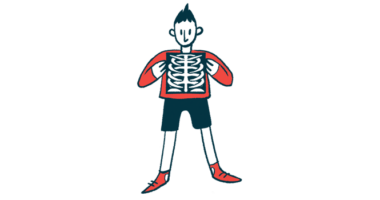Overall Health, Muscle Strength Similar in hEDS and HSD, Study Says

Women with hypermobile Ehlers-Danlos syndrome (hEDS) show similar physical functioning, as well as muscle strength, density, and mass, compared with those with hypermobile spectrum disorder (HSD), a study found.
However, both patient groups have worse physical health and muscle strength than healthy women of the same age.
The study, “Muscle Strength, Muscle Mass and Physical Impairment in Women with hypermobile Ehlers-Danlos syndrome and Hypermobility Spectrum Disorder,” was published in the Journal of Musculoskeletal and Neuronal Interactions.
People diagnosed with hEDS experience an unusually large range of movement in their joints (joint hypermobility), similar to patients with HSD. However, despite the greater tissue fragility in those with hEDS, studies show no difference concerning symptom severity and physical activity between hEDS and HSD.
Decreased muscle strength is key in both cases, and it may further exacerbate joint instability and contribute to recurrent joint dislocations, affecting quality of life.
Previous research on muscle strength and physical function in hEDS patients used older diagnostic criteria. “Consequently, it is unclear whether muscle strength and physical functioning is affected to the same extent in individuals with hEDS and HSD, diagnosed according to the most recent criteria,” the scientists wrote. “This knowledge is of primary importance as this might assist health practitioners to tailor therapy to the needs of patients with hEDS and HSD, and in the decision whether or not they should treat patients with hEDS and HSD differently.”
Here, scientists in Belgium and Australia looked at the way in which those diagnosed with hEDS compare with those diagnosed with HSD, as well as healthy controls, in terms of physical impairment and muscle strength, mass, and density. (People with joint hypermobility who do not fulfill the criteria for hEDS are diagnosed with HSD.)
The study included 20 women with hEDS, 23 with HSD, and 28 age-matched healthy women serving as controls.
Results showed significantly greater hypermobility (assessed with the Beighton score), pain (evaluated with the general visual analog or VAS score), and fat percentage (whole body fat percentage except for the head) when comparing the patient groups with the controls. Patients also showed significantly greater physical impairment, as measured by the Arthritis Impact Measurement Scale (AIMS).
No significant differences were observed between participants with hEDS or HSD.
Only the physical health component of AIMS was assessed, which includes movement skills, walking and bending, hand and finger function, arm function, household activities, and personal care.
No significant differences were observed between participants with hEDS or HSD.
Age, body mass index (a measure of body fat), muscle density, lean mass, and lean mass of the dominant leg and both arms were similar across the three groups.
Muscle strength endurance in the lower limbs and the shoulder abductors was decreased in hEDS and HSD patients compared with healthy controls, as was maximal muscle strength. Posture maintenance tests also found worse results in both groups of patients.
Physical impairment was higher in the patient groups. Additionally, muscle strength decreased as physical impairment increased in both hEDS and HSD patient populations.
“Compared to controls, physical functioning and muscle strength (maximal and endurance) were significantly lower,” the scientists wrote. “Consequently, (functional) strength training in individuals with hEDS and HSD is necessary.”
The researchers suggest that in addition to strength training, treatments for these patients should include pain relief to reduce disability and maximize benefits.
Further research is needed to clarify whether people with hEDS or HSD will similarly benefit from physiotherapy.







